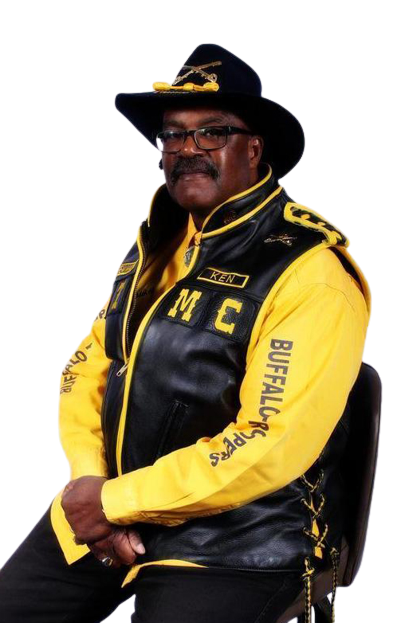Nearly sixteen months after the end of the Civil War, Section 3, of an act of Congress, entitled “An Act to increase and fix the Military Peace Establishment of the United States” authorized the formation of two regiments of cavalry composed of “colored” men. The act was approved on July 28, 1866. On September 21, 1866, the 9th Cavalry Regiment was activated at Greenville, Louisiana and the 10th Cavalry Regiment was activated at Fort Leavenworth, Kansas. Under the competent leadership of Colonels Edward Hatch and Benjamin Grierson, first Regimental Commanders of the 9th and 10th Cavalry Regiments, respectively, both organizations were trained and equipped to begin a long and proud history.
For over two decades, the 9th and 10th Cavalry Regiments conducted campaigns against American Indian tribes on the Western Frontier that extended from Montana in the Northwest to Texas, New Mexico, and Arizona in the Southwest. They engaged in several skirmishes against great Indian Chiefs such as Victorio, Geronimo, and Nana. “Buffalo Soldiers” was the nickname given by the Plains Indians. The reason for the name is uncertain, but one view is that the Indians saw a resemblance between the black man’s hair and that of a buffalo. Another view is that when a buffalo was wounded or cornered, it fought ferociously, displaying unusual stamina and courage. This was the same fighting spirit Indians saw in combat with black cavalrymen. Since Indians held the buffalo in such high regard, it was felt that the name was not given in contempt.
Throughout the 1800s, when not engaged in combat, both regiments built towns, and military forts, constructed roads, escorted wagon trains, protected settlers from renegade Indians/Outlaws, and served as Park Rangers. Additionally, these men provided male escorts and assisted in cattle drives. Elements of both regiments fought in Cuba during the war with Spain and participated in the famous charge on San Juan Hill. Troopers of the 10th Cavalry Regiment rode with General John J. Pershing during the Punitive Expedition in Mexico in search of Pancho Villa. In 1941, the two regiments formed the 10th Cavalry Brigade, commanded by General Benjamin O. Davis Sr. at Camp Funston, Kansas. In 1944, the end came to the horse cavalry regiments, and the curtain was lowered on the long and glorious past of the “Buffalo Soldiers.”
The U.S. Army was one of the most impartial institutions of its day, and it attracted men whose ability and endurance were vital to the nation’s freedom as well as the settlement of the Western Frontier. The legacy of the “Buffalo Soldiers” lives on through stories told by veterans of this period (1866-1944) and historical reenactments provided by organizations such as the National Association of Buffalo Soldiers and Troopers Motorcycle Club (NABSTMC), Inc. and the National Buffalo Soldiers Museum.

